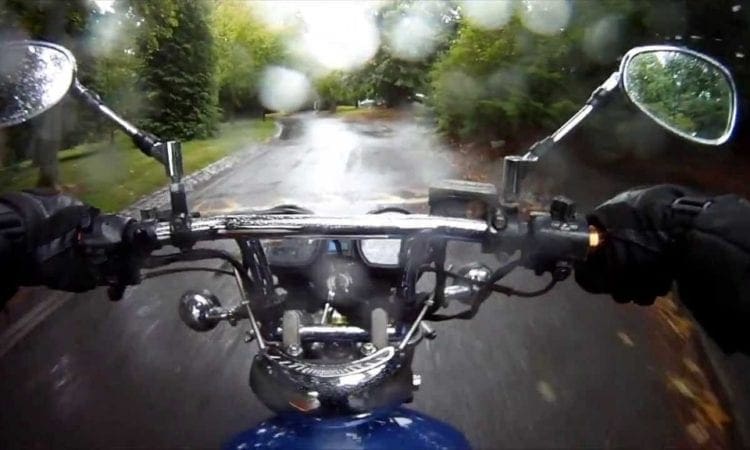Recently we’ve seen some of the heaviest rain we’ve had for quite some time – here is some advice from IAM RoadSmart on how best to cope with it.
Heavy rain:
•Heavy rain will affect your visibility, so take it slow. Rule 126 of the Highway Code states that the braking distance between yourself and the vehicle in front of you should be two seconds when driving on a dry road, and at least four seconds in the wet. It is even longer on icy surfaces. IAM RoadSmart recommend up to 10 times the braking distance when driving on ice.
Enjoy everything More Bikes by reading monthly newspaper, Read FREE Online.
• Before you start your journey, make sure your helmet visor is clean. If your helmet has the fittings, then it is advisable to fit some sort of Pinlock anti-fogging system; alternatively, wipe the inside of your visor with some sort of anti-fogging liquid – if you don’t have any, then you could put some washing-up liquid onto a cloth and spread it across your visor, but make sure you polish it off to avoid ending up with a smeary visor.
• Don’t forget to switch your headlights on – you might be able to see, but you want others to be able to see you as well.
Aquaplaning:
• If the water is standing in puddles on the road surface, your bike is at risk of aquaplaning. Aquaplaning is where a wedge of water forms in front of the tyre and lifts it up off the road surface. This is caused by the tread not being able to displace the amount of water present. To recover form aquaplaning, ease gently off your throttle, have a firm grip of the handlebars and be sure not to make any sudden steering actions. Your bike should eventually regain its grip as the water clears.
Floods:
•First ask yourself – can you take another route which avoids a flooded area? If not, then you need to identify how deep the flood is. If the standing water is more than six inches deep, avoid riding through it. If you’re familiar with the road, you can judge the flood in relation to the kerb.
• If heavy rain was not the cause of the flood, then what was? And what impact on he road does it have? For example, if it is a burst water main, the standing water may look like a normal flood but the road surface beneath the water may be completely broken up. If you’re unsure how the flood has formed, then avoid it altogether.
• Are there other bikes that are safely driving through flooded areas? From this, make a judgement call as to whether it is safe to travel through or not.
• If the water is fast flowing, do not attempt to ride through it, as there is a real danger of your bike being swept off the road.
• Ifyou have taken everything into consideration and decide to drive through the flood, be sure to do so slowly. The best approach for a motorcycle is to press lightly on your clutch and add gentle pressure to your throttle to increase your engine revs; on an automatic scooter you won’t have a clutch, so try applying light pressure to the back brake instead. Carry out either of these actions without increasing your speed, in a similar way to how you would undertake a hill start. This will prevent water from entering your exhaust. When you have passed the flood, test your brakes to make sure they are dry and working properly. If you’re in the slightest doubt, then turn around and don’t go through the flood.
•Remember to stay alert and avoid splashing pedestrians. If this is done accidentally – even when causing splashed when driving through puddles at the side of the road – you could receive a fixed penalty and three points on your licence for driving without due care and attention, or without reasonable consideration for other road users. If deliberately done, it could be a public order offence, a court appearance and a fine.

Richard Gladman, head of IAM Roadsmart’s driver and rider standards, said: “With the British weather the way it is, we should all be well practiced at driving in the rain. Keeping your bike maintained and the tyres in good condition will help you stay safe. In the recent extremes, we have seen that standing water and floods are becoming more commonplace, so take extra care and if possible avoid driving through standing water. If you’re in any doubt about the depth or surface underneath a flood, then it’s best not to take any chances.”

Advert
Enjoy everything More Bikes by reading the MoreBikes monthly newspaper. Click here to subscribe, or Read FREE Online.


